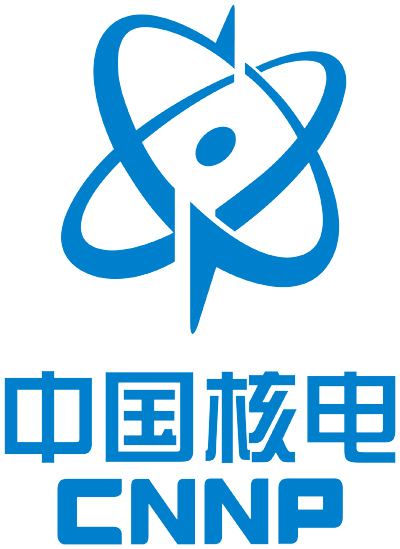Native name 中国核工业集团公司 Key people Sun Qin (President) Number of employees 100,000 Founded 1955 | Industry Nuclear technology Website www.cnnc.com.cn Headquarters Beijing Type State-owned enterprise | |
 | ||
Predecessor Ministry of Nuclear Industry Products Nuclear weapons, nuclear power generation Subsidiaries China National Nuclear Power Co Ltd | ||
China national nuclear corporation top 7 facts
The China National Nuclear Corporation (CNNC; Chinese: 中国核工业集团公司; pinyin: Zhōngguó Hé Gōngyè Jítuán Gōngsī) is a state-owned entity founded in 1955 in Beijing. CNNC's president and vice-president are appointed by the Premier of the State Council. However the CNNC is a self-supporting economic corporation, not a government administrative body. It oversees all aspects of China's civilian and military nuclear programs. According to its own mission statement, it "combines military nuclear weapons production with civilian production, taking nuclear industry as the basis while developing nuclear power and promoting a diversified economy." CNNC is a nationwide industrial conglomerate integrating science, technology, industry, and international trade.
Contents
- China national nuclear corporation top 7 facts
- History
- Investigation
- Pressurized Water Reactors
- CNP 1000 CNP 600 and CNP 300
- Advanced CANDU reactor
- References
History
The Ministry of Nuclear Industry built China's first atom bomb, hydrogen bomb and nuclear submarine. It functioned as a government bureau for the national nuclear industry and reported directly to the State Council. It oversaw China's nuclear-related corporations, manufacturers, institutions, research institutes, and plants, including those related to nuclear weapons. It was responsible for the design and operation of nuclear power plants; nuclear fuel production and supply, including the processing of natural uranium, uranium conversion and enrichment, fuel assembly fabrication, spent fuel reprocessing, and nuclear waste disposal.
In 1988 the Ministry of Nuclear Industry was re-organised and became the CNNC. The corporatization was partly carried out to gain funds from outside of the government via exports.
In the mid 1990s, CNNC had 300,000 employees and managed 200 organisations.
In 1998, the CNNC was abolished.
As of 2014 CNNC has 100,000 employees and 110 subsidiaries. It has 4 nuclear power plants (Fuqing, Fangjiachan, ?? & ??) with 9 reactors in operation with a generation capacity of 6.5 GWe, with a further 12 reactors under construction.
In June 2015, CNNC announced it would aim to raise 13.19 billion Chinese yuan in an initial public offering, that if successful, would be the largest in China in almost four years previously. Consequently, as of June 2015 it ranks no. 9 of Chinese companies for long term borrowings, which are over 67% of its market cap at that time.
In September, CNNC announced a project with the UK's National Nuclear Laboratory to create the Joint Research and Innovation Centre. The centre will investigate aspects of the nuclear fuel cycle. The UK and China will jointly fund the project over five years at the cost of £50 million.
Investigation
Kang Rixin, a senior general manager is currently being investigated (as of August 10, 2009) for $260 million that was earmarked for the construction of three nuclear plants and allegedly used the funds for the stock market sustaining heavy losses. He is also accused of accepting bribes from a foreign company that intended to build nuclear power stations in China.
Pressurized Water Reactors
Since 2011 CNNC has been progressively merging its ACP1000 nuclear power station design with the China General Nuclear Power Group (CGNPG) ACPR1000 design, while allowing some differences, under direction of the Chinese nuclear regulator. Both are three-loop designs originally based on the same French design, but now have different nuclear cores. The first two ACP1000 units will be built at Fuqing Nuclear Power Plant.
In early 2014 it was announced that the merged design was moving from preliminary design to detailed design. Power output will be 1150 MWe, with a 60-year design life, and would use a combination of passive and active safety systems with a double containment. Initially the merged design was to be called the ACC1000, but ultimately it was named Hualong One or Hualong-1. In August 2014 the Chinese nuclear regulator review panel classified the design as a Generation III reactor design, with independently owned intellectual property rights.
The first units to be constructed will be Fuqing 5 and 6, Fangjiashan 3 and 4, and a build has been proposed in Argentina.
CNP-1000, CNP-600 and CNP-300
These reactor types are in operation at Qinshan NPP (since 2002), Changjiang NPP (2x, since 2015/2016 respectively) and, as of September 2016, under construction at Chasma NPP (reactors 3/4).
Advanced CANDU reactor
In September 2016 it was announced that SNC-Lavalin has signed an agreement in principle with CNNC and the Shanghai Electric Group to design, market and build the advanced CANDU reactor. Its ability to use reprocessed uranium will reduce China's stock of spent nuclear fuel.
